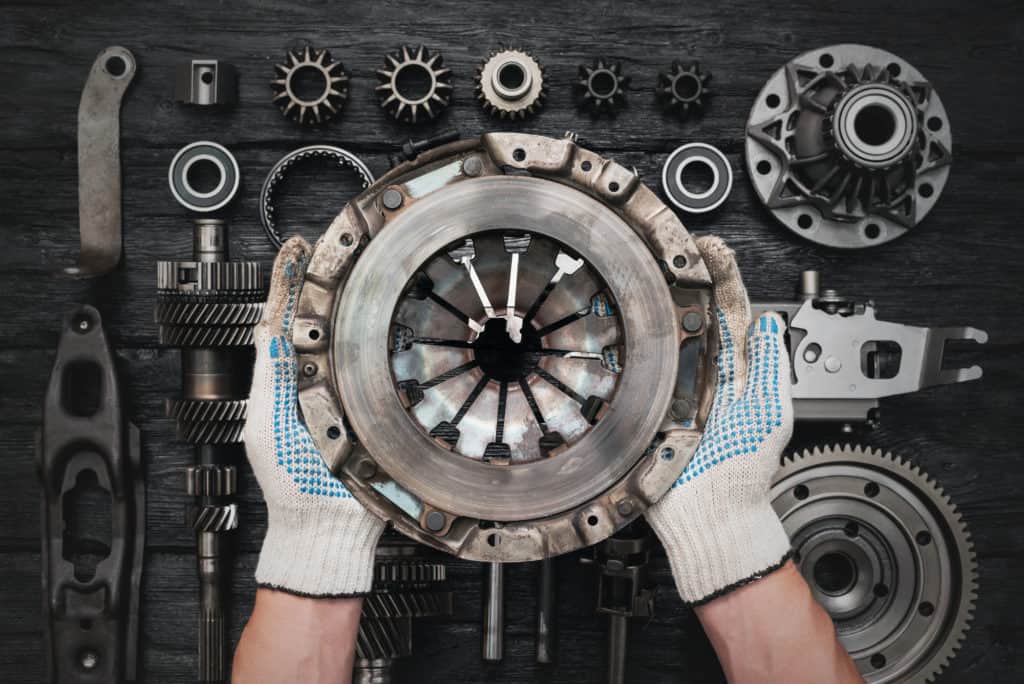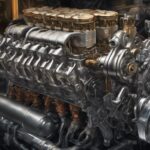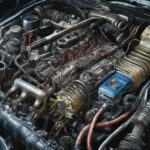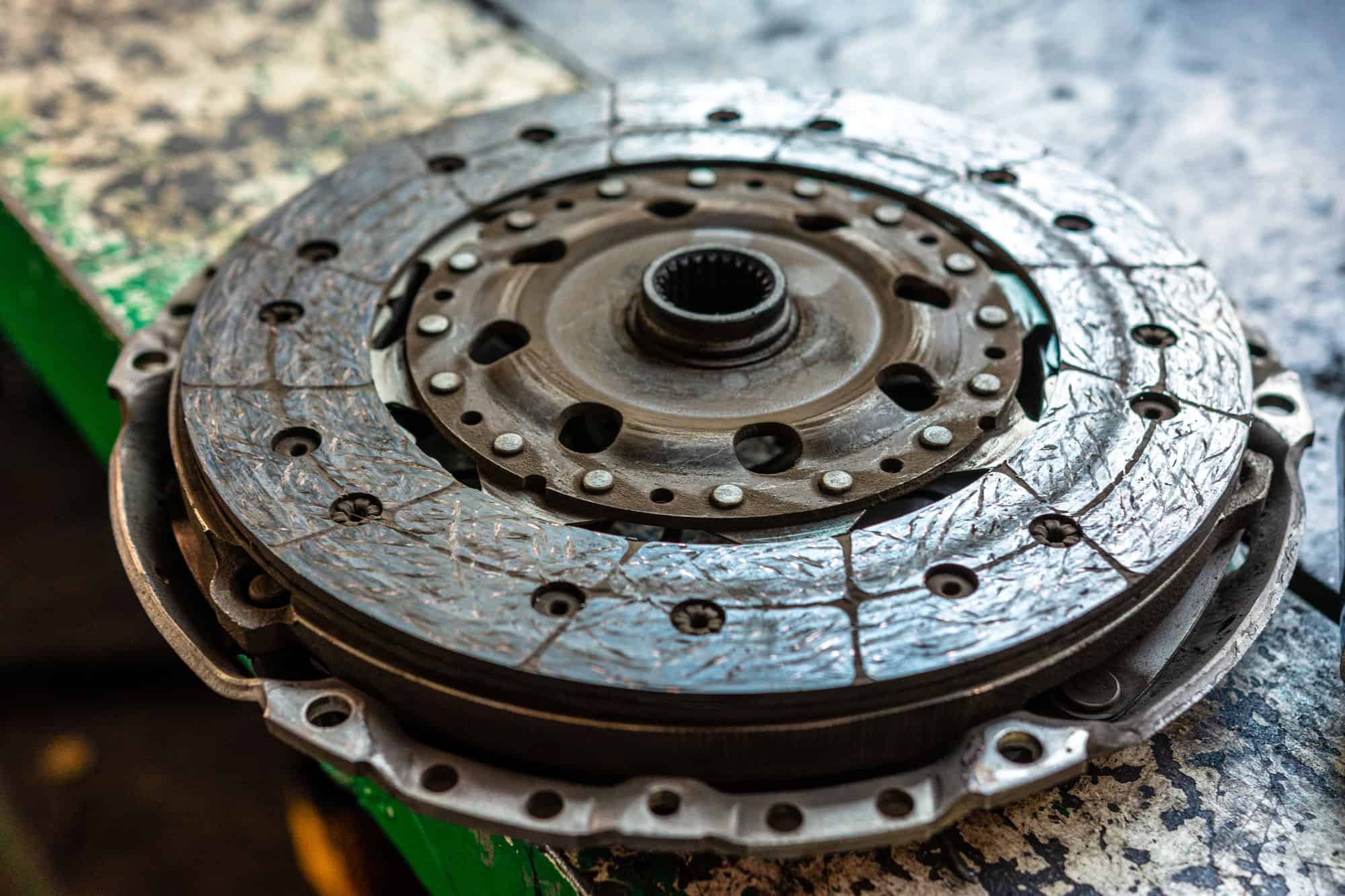One of the main reasons why a clutch will fail is because of burning. A burnt clutch is usually caused by not engaging and disengaging the clutch fully when changing gears.
As a general rule, the symptoms of a burnt clutch include a bad burning smell coming from outside of the car when using the clutch, faster than expected engine speed when accelerating or when driving up a steep hill and unusual noises or vibrations from the clutch.
Regularly burning the clutch will cause excessive clutch plate wear and may also cause damage to the pressure plate and flywheel. If this happens, a whole new clutch assembly will need to be installed.
6 Very Common signs of a burnt clutch
- Foul Smell After Changing Gears
- Erratic Engine Acceleration
- Engine Revs Unexpectedly
- Difficulty Selecting Gear
- Strange Noises When Changing Gear
- Clutch Pedal Feels Different
One of the main symptoms of a burnt clutch is the foul smell. It’s hard to describe how bad a burnt clutch smells if you have never experienced it.
If the clutch is burning, you will smell the odour inside and outside of your car. A burning clutch smell can be described as a pungent, sulphur like smell. Some people say it smells like burning brakes or gun powder!
If you are regularly getting a bad smell after changing gears or pulling away, then the clutch is more than likely burning, and as a result of this is probably slipping and nearly worn out.
The symptoms of a burning clutch are also the symptoms of a worn, slipping clutch.
Symptom 1: Foul, acrid burning smell after changing gears or pulling away
The number one symptom of a burning clutch is the awful smell that it creates.
When a clutch is “burning”, the friction material of the clutch disc is overheating and is being worn down as it rubs against the spinning flywheel. This occurs because the clutch disc is not fully engaged by the pressure plate. The burning clutch smell is from the scorching friction material as it wears away.

If the clutch is relatively new, then it should be able to grip the flywheel once it is under some pressure from the pressure plate and diaphragm spring. A worn clutch disc will not have the same ability to grip the flywheel, so it will be more likely to ‘slip’ when it is engaged and disengaged.
A clutch is also more likely to burn when pulling away as the clutch disc is put under more strain than usual as it initially grips the spinning flywheel that is increasing in speed to pull the car forward.
Symptom 2: Erratic engine jerking after changing gears
Another very common symptom of a burnt clutch is a jerking of the engine that feels like it is trying to accelerate more than it should. This is caused by the burnt clutch slipping as it tries to grip the flywheel.
The engine jerking is related to the way in which you control the pedals when driving a manual car. When the clutch pedal is pressed in by one foot, it is normal practice to temporarily remove the other foot from the accelerator pedal (throttle).
When you push in the clutch pedal to change gear, this moves the clutch disc away from the flywheel to enable the gear change. As you release the clutch pedal, then the accelerator is pushed in at the same time so that the engine maintains speed. If the clutch disc is not gripping the flywheel as quickly and smoothly as it should, then this can cause the engine to jerk and surge because the engine power is not being transferred to the wheels.
Symptom 3: Unexpected increased engine revs when under load or going uphill
A burnt clutch can also cause the engine to surge or increase in revs when it is under an extra load, such as driving up a steep hill or when pulling a heavy load such as a trailer.
The burnt clutch will often slip under heavy load because the friction material on the clutch disc is nearly worn away and has become scorched and glossy in appearance. This makes it less able to grip the surface of the flywheel. The lack of grip is more noticeable because when under load, the engine crankshaft outputs a higher than normal torque. This puts extra strain on the flywheel clutch connection and makes clutch burn more likely.
Symptom 4: Difficulty Selecting gear
A burnt clutch can also make it difficult to select a gear. This is because a worn clutch plate sometimes does not disengage fully from the flywheel when the clutch pedal is pressed. This can further compound the problem, not only does it make the gear change more difficult, but it also causes the clutch plate to slip and burn more as it partially engages with the flywheel.
Sometimes the initial problem of difficulty changing gears can be caused by damage to the pressure plate, the diaphragm spring or the clutch fork that has been caused by driving with a burnt clutch.
Symptom 5: Strange noises when changing gear
As outlined earlier, a burnt-up clutch can cause problems when changing gears. If there is damage to the flywheel (scorching, cracks, warped surface) or problems with the pressure plate, clutch fork, slave cylinder, or even the master cylinder, this will make gear changing clunky and rough.
Any excess wear or damage will also make gear changes noisy. Damaged clutch assembly parts won’t operate as smoothly as they should and this will invariably lead to strange clunking, whooshing, or banging noises when you are trying to change gear. A burnt clutch plate will also cause problems when trying to change gears smoothly, and will also result in strange noises.
Symptom 6: Clutch pedal feels harder or softer than usual
If you notice changes to the clutch pedal then this is often a sign of a burnt clutch. Changes to how the clutch pedal feels can sometimes be a knock on effect of a burnt clutch. A burnt clutch plate can damage other parts in the clutch and this can affect how the clutch operates over time.
A burnt up clutch plate will vibrate and slip and this will damage the flywheel and possibly the pressure plate, clutch fork and release bearing. Damage to these other parts will affect the feel of the clutch pedal, making it harder or softer to push depending on the what part is damaged.
What causes a burnt clutch?
A burnt clutch is caused by excessive slippage of the clutch plate when the engine is running.
Slippage of the clutch plate against the flywheel and pressure plate generates excessive heat that creates the burning smell and damage to the clutch friction material. This quickly wears down the clutch plate, causing it to slip more until it fails completely.
The most common reason for a burnt clutch is improper use of the clutch. Not fully engaging and disengaging the clutch when changing gears and driving with your foot on the clutch pedal will cause it to wear out prematurely.
A clutch can also burn out if the car or truck is used to pull loads that are too heavy. Heavy loads create excessive forces on the clutch, because of the extra torque needed to move. If the vehicle is not designed to carry or pull extra weight, then the clutch is likely to burn out pretty quickly.
A burnt clutch is also common in heavy goods vehicles and large vehicles such as buses. This is because of the huge amount of energy that is needed when moving a heavy load. Large vehicles such as these usually have modified, heavy duty clutches that can deal with the extra torque so that the clutch lasts longer.
What Next: How to fix a burnt clutch
The only way to fix a burnt clutch is to replace it. Once the clutch plate becomes worn and possibly damaged, there is no way to repair it.
If the clutch plate has been allowed to burn and slip for a while, then there may be damage to the flywheel and other clutch parts. For this reason, it’s usually best practice to replace the entire clutch when replacing the burnt clutch plate.







I’ve been feeling like my clutch pedal is softer than usual and have noticed a strange burning smell after driving. Could this be an indicator of a burnt clutch, and if so, what should my first step be in addressing this issue?
Could this issue cause any long-term damage to the transmission if not addressed promptly?